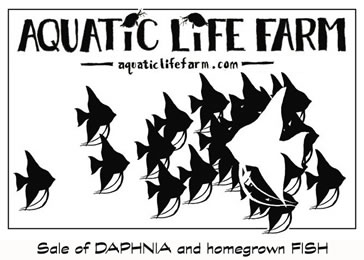b considine
a dude playing a dude disguised as another dude
I have a 30 gallon that was, until Tuesday, over loaded with various corydoras awaiting new homes until my fishwall gets up and running. The tank is filtered by an Aquaclear 70 and an Eheim 2213. It housed a dozen or so corys of various types and some leftover ancistrus fry, and has for the better part of the year.
On Tuesday I did my weekly 30% water change and rinsed both the prefilter and the sponge of the Aquaclear. Almost immediately I started to see fish rolling over stiff as a board. I feared I had used water that was too cold, but the temp had only dropped 5 degrees. I use Prime as my dechlor.
By the time I got home from work yesterday, another half dozen corys had snuffed it. I ran some diagnostics and found nitrate at 10-20 ppm (admittedly elevated), slightly elevated ammonia. pH was 6.4. Performed a massive water change, and things seemed to calm a bit.
This morning, 2 more of the surviving 8 corys were dead. Noted that of all the casualties, several showed signs of fin rot, though the majority did not. There was no sign of rot when I fed and performed my nightly inspection on Monday. The last of my mighty herd of ancistrus appear completely unaffected.
The saddest part of this is that tank has been running largely without incident since I set it up in '95. Also, it housed my Mike Barber corys, the pride of my fleet.
Any ideas as to the cause? If it's time to tear this thing down and reboot, what's the sterilization procedure?
Blaise
On Tuesday I did my weekly 30% water change and rinsed both the prefilter and the sponge of the Aquaclear. Almost immediately I started to see fish rolling over stiff as a board. I feared I had used water that was too cold, but the temp had only dropped 5 degrees. I use Prime as my dechlor.
By the time I got home from work yesterday, another half dozen corys had snuffed it. I ran some diagnostics and found nitrate at 10-20 ppm (admittedly elevated), slightly elevated ammonia. pH was 6.4. Performed a massive water change, and things seemed to calm a bit.
This morning, 2 more of the surviving 8 corys were dead. Noted that of all the casualties, several showed signs of fin rot, though the majority did not. There was no sign of rot when I fed and performed my nightly inspection on Monday. The last of my mighty herd of ancistrus appear completely unaffected.
The saddest part of this is that tank has been running largely without incident since I set it up in '95. Also, it housed my Mike Barber corys, the pride of my fleet.
Any ideas as to the cause? If it's time to tear this thing down and reboot, what's the sterilization procedure?
Blaise


